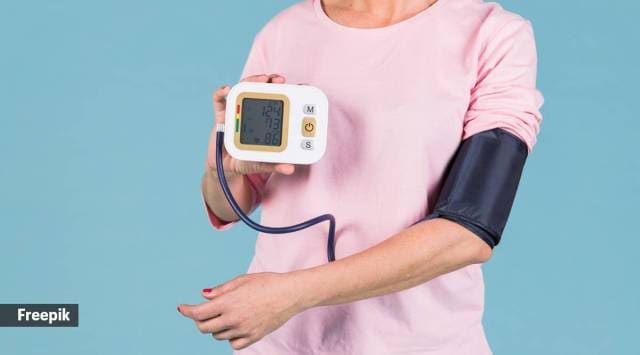- India
- International
Can home-grown medical devices reduce the cost of healthcare services?
There is also the need for a regulatory framework in the approval, licensing and the quality control of these medical devices in order to protect the end consumer, the patient, says Prof Preeti Kumar, Vice President, Public Health Foundation of India and Director, Indian Institute of Public Health, Delhi
 India is the 20th largest medical device market in the world, but its contribution to the global market is less than 1.6 per cent. (Pic source: Freepik)
India is the 20th largest medical device market in the world, but its contribution to the global market is less than 1.6 per cent. (Pic source: Freepik) The COVID-19 pandemic highlighted the inadequate availability of essential medical devices in India during a time of intense demand. Medical devices, ranging from ventilators and oxygen purifiers to personal protective equipment (PPE) and N95 masks, were in short supply when the health system in the country and the population it serviced needed them the most. However, medical devices largely remain inaccessible even otherwise, both in terms of availability and affordability. This lack of access stems from issues such as hurdles in their procurement in public and private hospitals, supply issues due to inadequate manufacturing capacity in the country for high-end medical devices and the high cost of importing such medical devices in the country.
While India has a robust pharmaceutical industry which contributes to 20 per cent of the global demand for generic drugs and low-cost vaccines, the medical device market and industry in the country is quite nascent. India is the 20th largest medical device market in the world, but its contribution to the global market is less than 1.6 per cent. This contribution is also largely in the form of low-cost devices such as surgical gloves, urinary catheters and other disposable equipment that are manufactured and exported in large numbers. Yet expensive medical devices such as cardiac stents, dialysis machines and ventilators are imported at a significant cost making them expensive for the public to use.
The increasing burden of cardiovascular diseases such as stroke and ischemic heart disease, accounting for a third of all deaths, puts an enormous burden on families for diagnosis, emergency care and hospitalisation. While the out-of-pocket expenditure (OOPE) on healthcare has been shown to have come down from over 60 per cent in 2014-15 to nearly 50 per cent in 2019-20, this is still significant enough to push families into poverty, if they face any sudden life-threatening medical emergencies that might require access to even a single high-end medical device. Developing and manufacturing such devices within the country would reduce their cost to the patient and avoid such catastrophic expenses. It will also improve their availability in smaller hospitals in sub-urban and rural areas, reducing the need for patients to travel to tertiary hospitals in Tier I cities.
Efforts have been made by the government since 2014-15 to promote local manufacture and attain self-sufficiency in key medical devices that are widely used for more common conditions such as cardiac stents, dialysis machines and imaging equipment. Incentives such as the ‘Make-in-India’ program, and Production Linked Incentive (PLI) scheme with a budget of Rs 18,420 crore have been envisaged to promote domestic manufacturing of medical devices.
These programmes promote local production by setting up manufacturing hubs with supply-chain infrastructure and provide financial incentives for the investment of capital into design and manufacture of high-end medical devices. Both private and public hospitals in the country face challenges due to lack of local manufacturing of high-end devices. While private players move through various buying channels trying to get the best prices for importing expensive equipment, the public hospitals need to go through an extensive procurement process to establish a lack of local manufacturers of the requisite medical devices and further import them through the public channels through tenders. Private hospitals then offset the high cost of importation of medical devices and health care services, by passing on the costs to the patients.

A streamlined process for local design, development and manufacturing could enable both local and foreign players to set up medical device manufacturing in the country and improve the supply to both private and public hospitals, which would further reduce the cost of the healthcare service to the patient. However, there is also the need for a regulatory framework in the approval, licensing, and the quality control of these medical devices in order to protect the end consumer, the patient. These measures, while stringent, should not pose as a roadblock to innovation within the country. This can be achieved by making these regulations and their implementation both transparent and streamlined.
The recently passed National Medical Devices Policy, 2023, which has been in the making over the past two years, aims to promote local manufacture of expensive medical devices such as surgical implants and monitoring and imaging equipment in order to reduce the import reliance of the country. This is in addition to the Production Linked Initiative (PLI) schemes which have been started to promote the local set-up of manufacturing units within the country by both MNCs and local manufacturers. This policy aims to grow the industry from the present $11 billion to $50 billion by 2030 and achieve 10-12% of global market share.
The new policy enables innovation through regulatory streamlining and licensing of newer devices, manufacture through the development of large medical device parks while attracting both human resource and financial investment through programmes such as Make in India, Heal in India and other Public Private Partnership programmes.
While the new National Medical Device Policy, 2023 paves a way forward for the country to boost its innovation and manufacturing capacity, further developments, such as examining the newer procurement processes that incorporate evidence-based decisions and value-based procurement by both the public and private healthcare system, are needed in order to fully realise its potential. Moreover, the academia in the healthcare industry, both public and private, need to conduct more largescale health technology assessment and research on the cost-effectiveness of the medical devices in order to further innovation and design.
With such a roadmap set by the new National Medical Device Policy and a robust participation by the public and private healthcare institutions of the country, which boast some of the global leaders in the field of medicine and surgery, India may be well poised to become a leader in the global market for medical devices by providing high-end tools at a lower cost to the global south much as it does with its generic pharmaceuticals and vaccines currently.
(The views expressed are personal)
May 13: Latest News
- 01
- 02
- 03
- 04
- 05






































